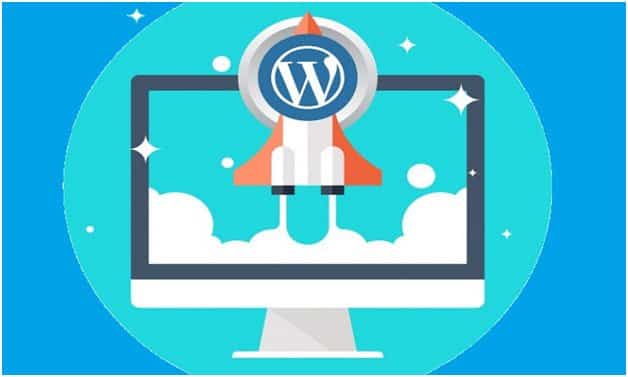5 Steps to Supercharge Your WordPress Site’s Performance

No one likes waiting on a slow website to load. In fact, a lot of people probably exit or hit the back button instead of waiting. Also, many of the Internet merchants lose sales, and they experience shopping cart abandonment because of slow loading pages. Poor website performance caused by slow loading will result in losing visitors and fewer visitors in the future. Implicit in the experiential difficulties, website performance, especially website loading speed, has a large impact on the search engine optimization, mostly known now as SEO, and search engine rankings.
Determining What Is Causing Your Website or Blog to Slow Down
As you begin to make preparations to optimize your website’s speed and performance, it is crucial to find out what is causing the slower load times for your pages. In order to test your website’s speed, use a speed test and enter the URL of any web page you want the performance of analyzed. After the speed test is done, have a peek at the Page Speed and Performance Grade reports. The reports will give you different techniques on how to improve the functioning of your website.
Information to Ponder Before You Spend Your Money
As you look over the speed test results, you will probably notice there are a lot of on-page factors that can that can give magnified load times. Before you act hastily and begin spending funds on several online optimization services and content delivery networks, it is recommended to do all of the on-page adjustments available. if you have a resource-intensive website code, expensive optimization services will not make a meaningful difference, and you will fall flat on your return on investment.
The Free Options
It is possible to bring your website back up to speed without having to spend any money on content delivery networks or any combo of optimization services. There are several optimization tips you can implement yourself to improve the the performance of your website and increase your search engine optimization score.
Besides, if you have a resource-intensive code for your page, services that provide site optimization, often for a heavy price, will not make any kind of a positive and meaningful impact. Unfortunately, you would be spending a lot of money for services that probably cannot help your site, but there are five steps you can take to vastly improve your website’s optimization.
The Five Steps in Detail
Below are the five steps to supercharge your WordPress site’s performance.
-
Reduce and Compress Images
In order for your images to load as fast as possible, it is crucial to resize them prior to uploading them on your site. Never upload images bigger than what is necessary for you to display. One way to scale them to an appropriate size it, so they are will appear as desired would be using the HTML code to scale the images. Unfortunately, the appearance and not the original file size will not be reduced. Depending on the type of image file, there are steps you can take.
For example, if you take a JPG image and reduce the scale before uploading it, it is possible to take a a JPG image that is 900×900 pixels with a 150kb file size and optimize it to 150×150 pixels and get a 15kb file size, which would dramatically decrease load time. Finally, the PNG format lets you store superb quality images with a high level of compression. Since PNG images are often big, a free compression tool like this one allows you to great reduce the file size of a quality image without diminishing the quality.
Again, reduce the sizes before putting the images into your code to increase load time, or you will only be reducing appearance instead of size. Remove the images from the code, reduce their file size using the instructions above and add them back in.
-
Reduce the Number of Requests
When a browser starts gathering all of a web page’s elements, it will not download more than five elements at the same time. So, the more files your website has, the longer the load time will be. Additionally, the size of your transferring files means nothing. It is all about quantity in this area of load time reduction.
If your site has several Javascript and CSS documents, you can reduce the number of requests the web server gets by combining the documents from Javascript and CSS.
-
Minify Javascript, CSS and HTML Code by Using Plugins or Free Tools
In order to lower the amount of data, remove line breaks and extra spaces from the source code. The result will be a reduction in the amount of transferred data, which will decrease load time and become another facet in fulling optimizing your website. If you want to dynamically decrease the documents, install the following WordPress plugins, read over the descriptions carefully and use them as instructed:
- Better WordPress Minify
- WordPress Compress HTML:
- WP Minify
Some people prefer to not use WordPress plugins to minimize Javascript and CSS documents. If you are one of those people, then you can use the following web tools to minimize them:
- CSSMinifier.com
- Javascript-Minifier.com
-
Leverage Browser Caching
This method appears simple, but it requires some coding knowledge, and since WordPress makes things so much easier, except for technical jobs, there may be a lot of people that have to do further research on this step. If you determine a longer caching time period for your web page elements such as, images, HTML, CSS, documents, Javascripts and more, browsers will locally cache these different elements.
They do so in order to not have to downloaded them every time the page is accessed. This is has a dramatic effect on optimizing your website. To leverage browser caching, a file named specifically called .htaccess needs to be created at the root of your site or blog.
-
Add a Cache Plugin
Caching pages on your WordPress site will greatly diminish processing time, increase the site’s loading speed, supercharge the site’s optimization and assist in search engine optimization. Whatever caching plugin you decide to use, the function of them is to store the output from a WordPress generated website in a database. The next time anyone visits the page, the stored data from the cache will result in much quicker rendering and loading.
As an additional benefit to caching pages, you free up additional resources needed for other processes, and some of those processes are critical in helping supercharge site optimization. You should probably get the free WordPress plugin, WP Super Cache. Most experienced users, including this author, consider it to be superior, even among a lot of wonderful, free cache plugins.
These are the five major steps to improve your website’s optimization. Since compressing images is a huge step to maximizing performance and improving search engine optimization, it got the most coverage. Also, images and their coding are critical to SEO as well, so it is important to have images, but their file size should be reasonable. Aside from reducing and compressing images, they should all improve site optimization individually, but if they are all used, then you will have a lightning fast site with improved search engine optimization.
By speeding up your WordPress site at our seo agency we’ve found a increase in rankings from 7 to 11%. Not bad for a few hours work.
Joel House Author
Joel House helps small to medium businesses grow their revenues through increased search traffic. As the owner of Australia’s highest ranking SEO Agency, he has a burning desire to help small businesses with SEO that actually works. When he isn’t helping small businesses grow, he is furiously reading to stay on the cutting edge.

